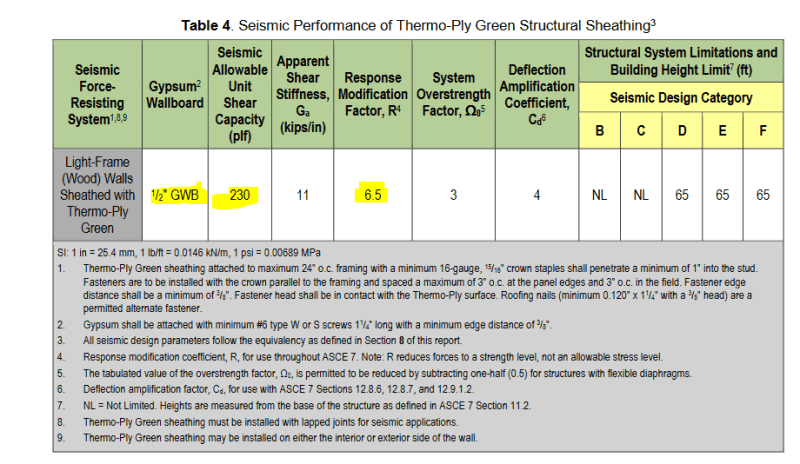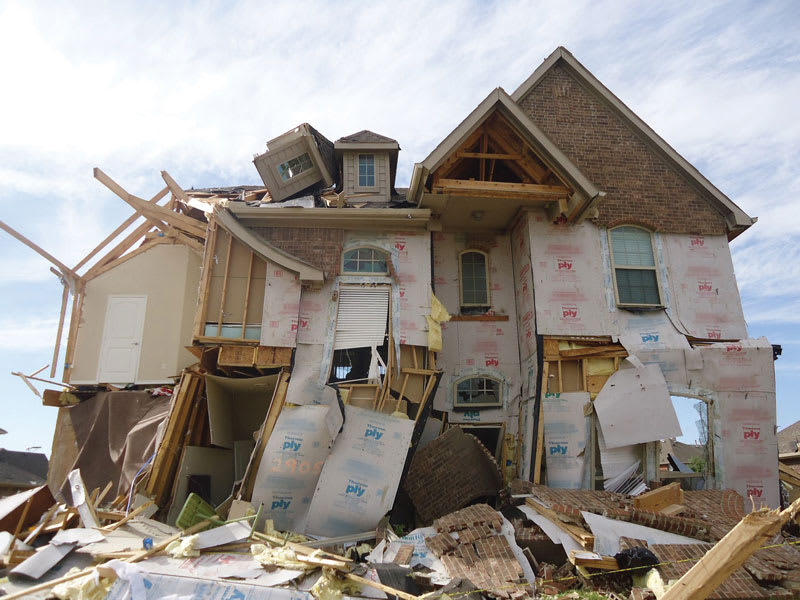jacktbg
Mechanical
- Jun 14, 2017
- 34
So I was out walking a job site a while back and noticed Thermo-ply in lieu of actual WSP - an engineer we were with pointed out that the APA said some thermo ply homes may be under designed for lateral loads by as much as 39 percent. That kind of makes complete sense when you hold the stuff in your hands - you can tear it apart with your bare hands, try doing that with wood sheathing!! I understand that a weird composite material might have the tension strength much stiffer materials have but it's apparent just by playing with it that the compressive strength is absolutely awful, which is what the APA test in their product advisory seemed to indicate too. The stuff in compression might as well be cardboard, and part of a racking load on a set of studs is most certainly compression right?
Given the data out there about it being so dreadfully worse than plywood/osb per length, and the fact that I have not seen any further testing of it to refute the APA's claims (other than claims from like Ox itself claiming the APA is biased and/or they didn't like aspects of the test, even though they didn't bother to reproduce them...) I am left wondering, why does the IRC still allow it to be used equivalently to WSP/CS-WSP!?
This is on top of the fact that we all know the proper nailing patterns are often not being followed anyways and probably slip past inspection. I am SO curious if I'm the only one who finds the whole thing sketchy or if the industry as a whole kind of agrees and recognizes it as an issue. Is the problem that everyone is afraid to put out a negative opinion of Dr. J as an accredited lab? Every other product I have seen and or tested which is accredited by them is the same way - seemingly way overstated claims about products who similar manufacturers make, and those other manufacturers always have more conservative claims.
I would not build my own house with flexible sheathing in a wind-prone region, that's for sure!
Here's the APA studies I referenced alongside Ox's rebuttal:
Given the data out there about it being so dreadfully worse than plywood/osb per length, and the fact that I have not seen any further testing of it to refute the APA's claims (other than claims from like Ox itself claiming the APA is biased and/or they didn't like aspects of the test, even though they didn't bother to reproduce them...) I am left wondering, why does the IRC still allow it to be used equivalently to WSP/CS-WSP!?
This is on top of the fact that we all know the proper nailing patterns are often not being followed anyways and probably slip past inspection. I am SO curious if I'm the only one who finds the whole thing sketchy or if the industry as a whole kind of agrees and recognizes it as an issue. Is the problem that everyone is afraid to put out a negative opinion of Dr. J as an accredited lab? Every other product I have seen and or tested which is accredited by them is the same way - seemingly way overstated claims about products who similar manufacturers make, and those other manufacturers always have more conservative claims.
I would not build my own house with flexible sheathing in a wind-prone region, that's for sure!
Here's the APA studies I referenced alongside Ox's rebuttal:


